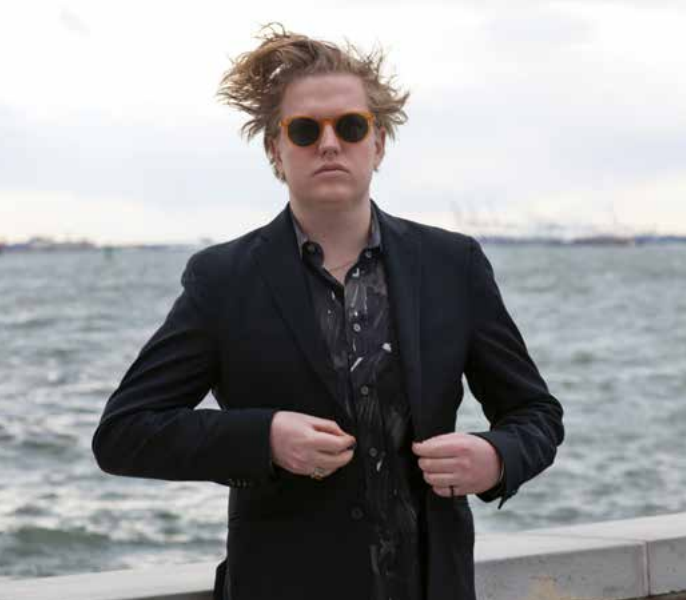At Work: Darkside’s Dave Harrington

“It’s not filled with songs, let alone hits,” Dave Harrington states as he assesses his long-awaited solo effort, Become Alive, an eight-track instrumental album that features nearly a dozen of the musician’s closest friends and collaborators.
Harrington, the multi-instrumentalist best known as one-half of the now-defunct Brooklyn indie-electronic act Darkside, certainly seems to enjoy the new approach and officially unveiled his Dave Harrington Group earlier this spring. And, as he explains, he’s doing it his way.
“There is a huge amount of improvisation,” he says, walking through a recording process that featured his Darkside collaborator Nicolas Jaar as well as Will Epstein, Andrew Fox, Nate Sloan, Samer Ghadry (who, along with Harrington, comprise the project’s initial live band) and a host of others. Harrington estimates that about “90 percent” of the roughly 30 hours of music he and his cohorts recorded came from improvisation that was mostly rooted in the jazz side of the New York-native’s varied interests.
“Jazz can be a loaded word,” he cautions. “And it can be a genre signifier. For me, it’s code for being present in the moment and being open to improvising and creating music that’s the result of real-time, instantaneous interactions between musicians who all have their own particular identity.”
The result is an intense, visceral song cycle that ebbs and flows somewhat like a movie score. (Interestingly enough, Harrington’s first show with this new project was a live performance of the score from the 1967 film Branded to Kill.) Bouncing from jazz to fusion to Darkside’s unique brand of electronica, Harrington strays from the blueprint that he laid down with Jaar circa 2011, but his signature sonic style still seeps through.
“Now that I’ve kind of become someone who traffics in and out of the electronic music world, I took those tools and the stuff that I’ve come to do with production and post-production and treated all the improv in my home studio,” he says. As for the future, Harrington seems quite comfortable in his current surroundings. “I’d like this to be a nice home for me,” he says. “A conceptual, spiritual space where the ideas, the players, the sounds, the structures, the approaches can evolve naturally based on how my interests change and how I’m influenced by the people I’m working with.”



















